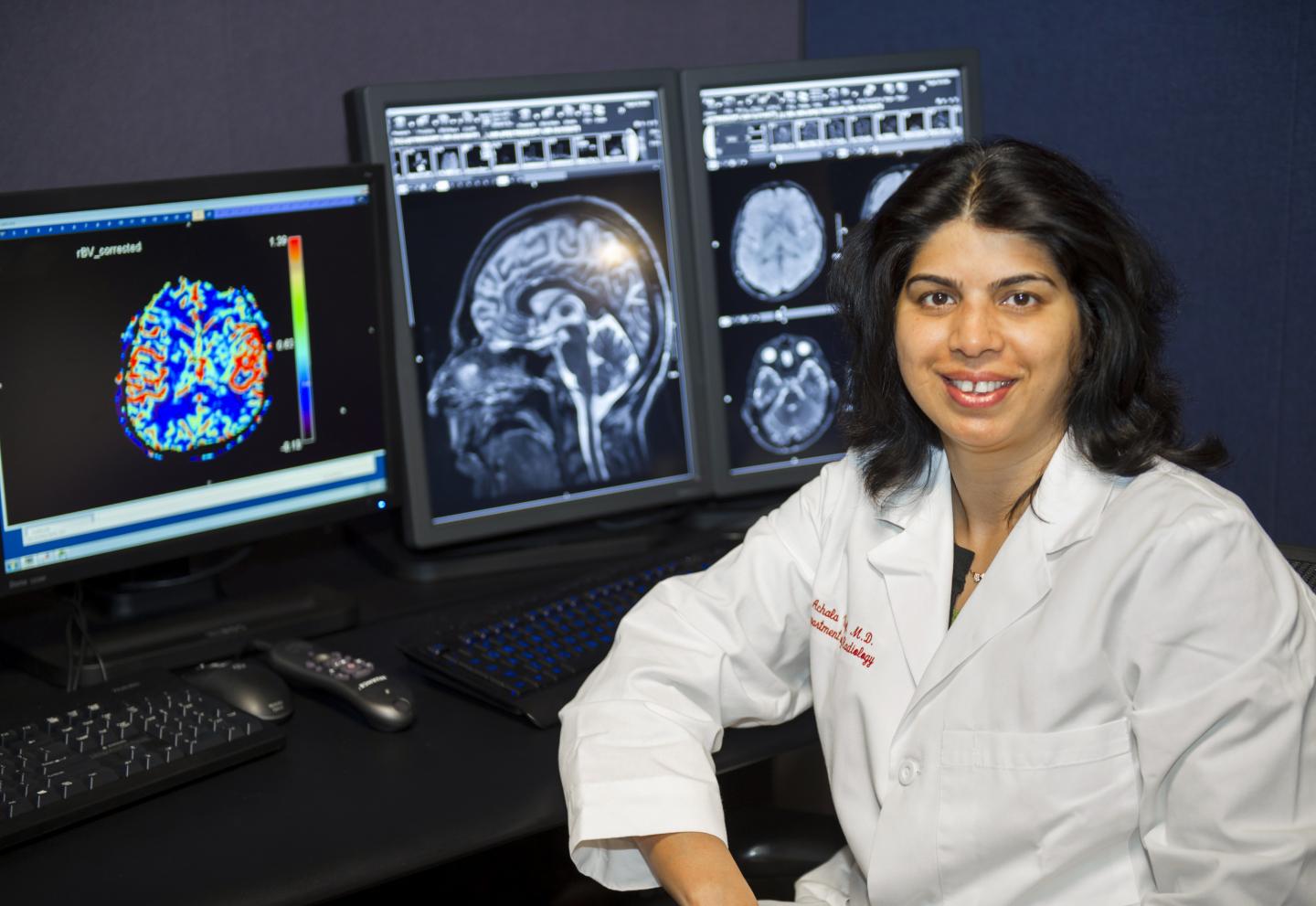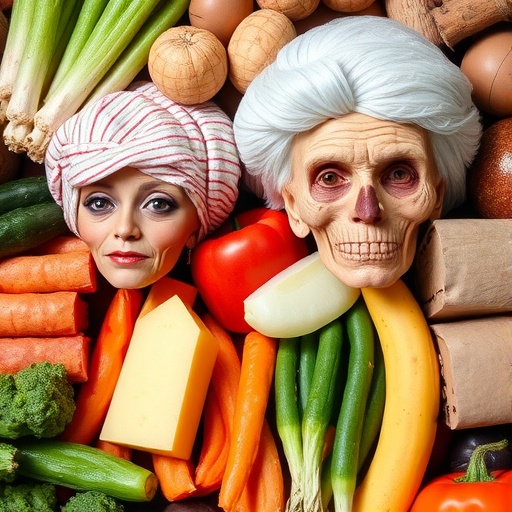Neuroimaging researchers will look for signs of small vessel disease in the brain to help identify patients at higher risk for stroke

Credit: Colleen Kelley, University of Cincinnati Communication Services
CINCINNATI–Researchers at the University of Cincinnati (UC) have received a $3.2 million grant from the National Institute of Neurological Diseases (NINDS) to study the use of neuroimaging to pinpoint the risk factors of stroke recurrence.
It is the first-ever R01 grant for the Department of Radiology at the UC College of Medicine. Achala Vagal, MD, associate professor and vice chair of research in the Department of Radiology, is the principal investigator (PI) on the study, along with co-PIs Pooja Khatri, MD, professor of neurology and director of the UC Stroke Team, and Brett Kissela, MD, Albert Barnes Voorheis Professor and Chair of the Department of Neurology and Rehabilitation Medicine and senior associate dean for clinical research.
Recurring stroke makes up about 25 percent of all stroke cases–nearly 800,000 annually–in the U.S. alone. Someone who has suffered a stroke has an increased risk of a recurring stroke for up to five years after the initial event.
“Compared to our understanding of the risk factors of an initial stroke, we have limited understanding of the factors surrounding recurrent strokes,” says Vagal.
Titled APRISE (Assessing Population-based Radiological brain health in Stroke Epidemiology), the study will build off of the Greater Cincinnati Northern Kentucky Stroke Study (GCNKSS), a compilation of population-level stroke data since the 1990s that has been the source of national data on stroke in numerous studies.
“We hope by looking at imaging of small and large vessel disease in the brain, we could determine an accurate measure of a patient’s brain health or a predictor of future cerebrovascular events, like stroke or vascular dementia,” says Vagal, whose research is focused primarily on what happens to the brain and blood vessels after an initial stroke.
Vagal and neuroimaging researchers will assess imaging for signs of small vessel disease in the brain; this can be in the form of previous injury, microbleeds, white matter disease (wearing away of tissue) or brain atrophy, among other observations. This type of focus on small vessel disease is an area of priority for NINDS.
“The development of a clinical prediction tool, incorporating our full range of modern imaging techniques, will enhance our ability to identify patients at a higher risk for recurrent strokes,” says Vagal.
She adds that imaging is a critical component of almost all clinical research and it is very beneficial to have radiologists actively involved in study design and reading the scans.
Khatri says this award leverages the extensive infrastructure of the GCNKSS already in place and puts “[UC] in a unique position to characterize brain health with remarkable efficiency and generalizability.”
She adds that the study will be the first and only population-based report of the entire imaging spectrum of brain health in patients who experience stroke or transient ischemic attack (TIA), a stroke-like incident. The study encompasses a racially diverse population, characterizing around 2,700 cases.
The new R01 is a milestone for both Vagal and the Department of Radiology, and she acknowledges the great support and mentors she had to help her pursue research work in neuroradiology. Vagal was a previous recipient of research and career development support from the American Roentgen Ray Society and the Center for Clinical and Translational Science and Training (CCTST). Khatri was her primary mentor for both these career development awards.
“The mentorship of Dr. Khatri has been critical for my career. I have always had incredible support from the radiology department, but to have additional cheerleaders in neurology and the UC Stroke team is an added advantage; it really does feel like my second home,” says Vagal.
“It has been incredibly gratifying to mentor Dr. Vagal, to see our radiology department grow its research portfolio and to now partner with her to achieve our synergistic goals. It has also been very rewarding to see our community work together toward better stroke care regionally and nationally,” notes Khatri.
###
Members of the central neuroimaging core include UC neuroradiologists Thomas Tomsick, MD; Mary Gaskill-Shipley, MD; Rebecca Cornelius, MD; and Lily Wang, MD. Shantala Gangatirkar will be the imaging coordinator for the study, and the biostatistical core will be housed at Cincinnati Children’s, led by Heidi Sucharew, PhD.
Media Contact
Alison Sampson
[email protected]
513-558-4559
Original Source
https:/




